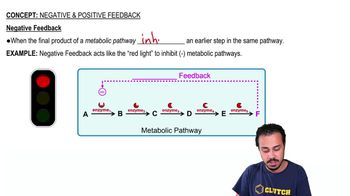Which hormone is correctly paired with its action? (A) oxytocin—stimulates uterine contractions during childbirth (B) thyroxine—inhibits metabolic processes (C) ACTH—inhibits the release of glucocorticoids by the adrenal cortex (D) melatonin—raises blood calcium level


Verified Solution
Key Concepts
Hormonal Functions

Oxytocin

Endocrine Feedback Mechanisms

The hypothalamus a. synthesizes all of the hormones produced by the pituitary gland. b. influences the function of only one lobe of the pituitary gland. c. produces only inhibitory hormones. d. regulates both reproduction and body temperature.
Growth factors are local regulators that a. are produced by the anterior pituitary. b. are modified fatty acids that stimulate bone and cartilage growth. c. are found on the surface of cancer cells and stimulate abnormal cell division. d. bind to cell-surface receptors and stimulate growth and development of target cells.
What do steroid and peptide hormones typically have in common? a. their solubility in cell membranes b. their requirement for travel through the bloodstream c. the location of their receptors d. their reliance on signal transduction in the cell
Which of the following is the most likely explanation for hypothyroidism in a patient whose iodine level is normal? a. greater production of T3 than of T4 b. hyposecretion of TSH c. hypersecretion of MSH d. a decrease in the thyroid secretion of calcitonin
The relationship between the insect hormones ecdysteroid and PTTH is an example of a. an interaction of the endocrine and nervous systems. b. homeostasis achieved by positive feedback. c. homeostasis maintained by antagonistic hormones. d. competitive inhibition of a hormone receptor.
